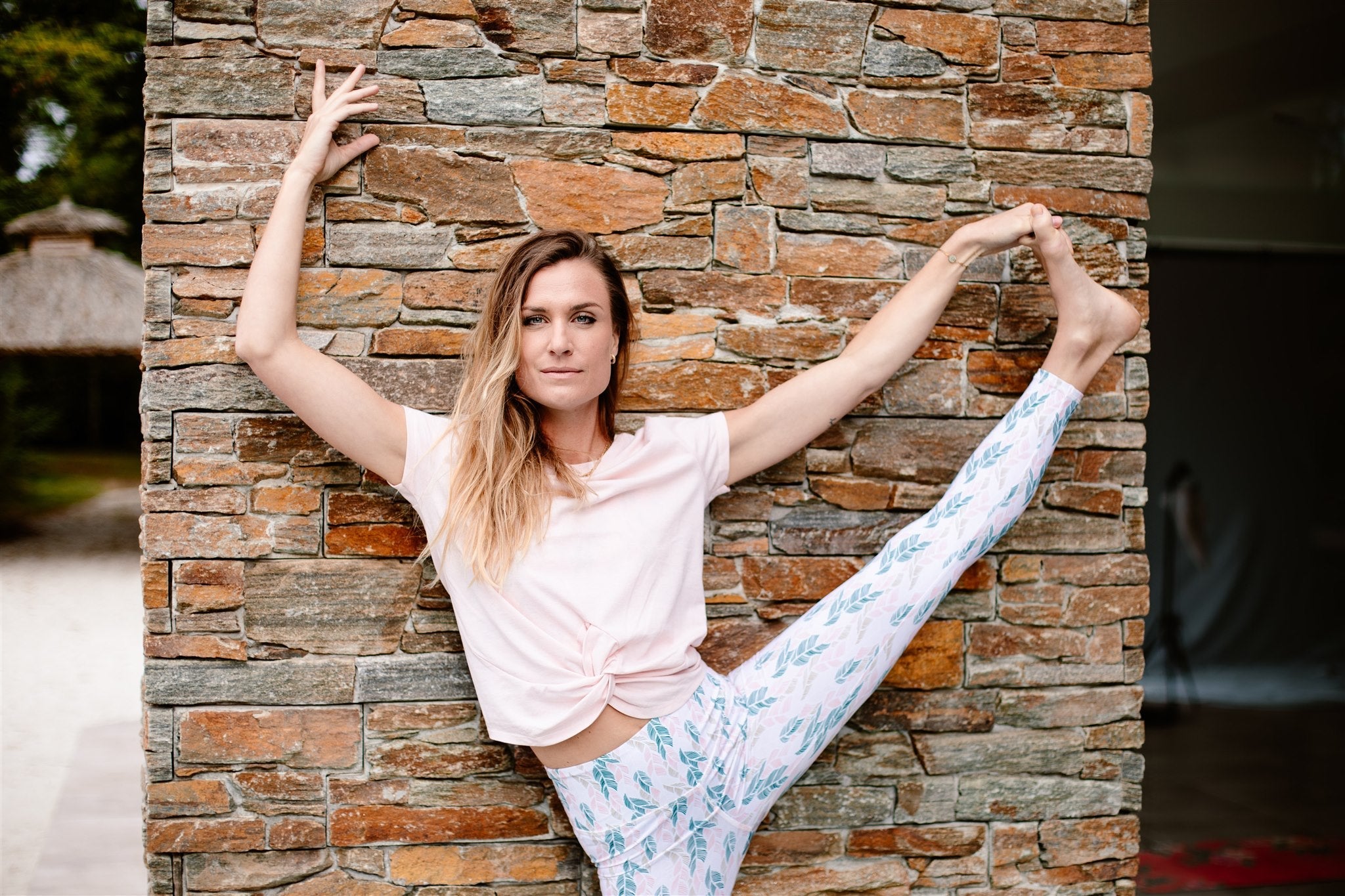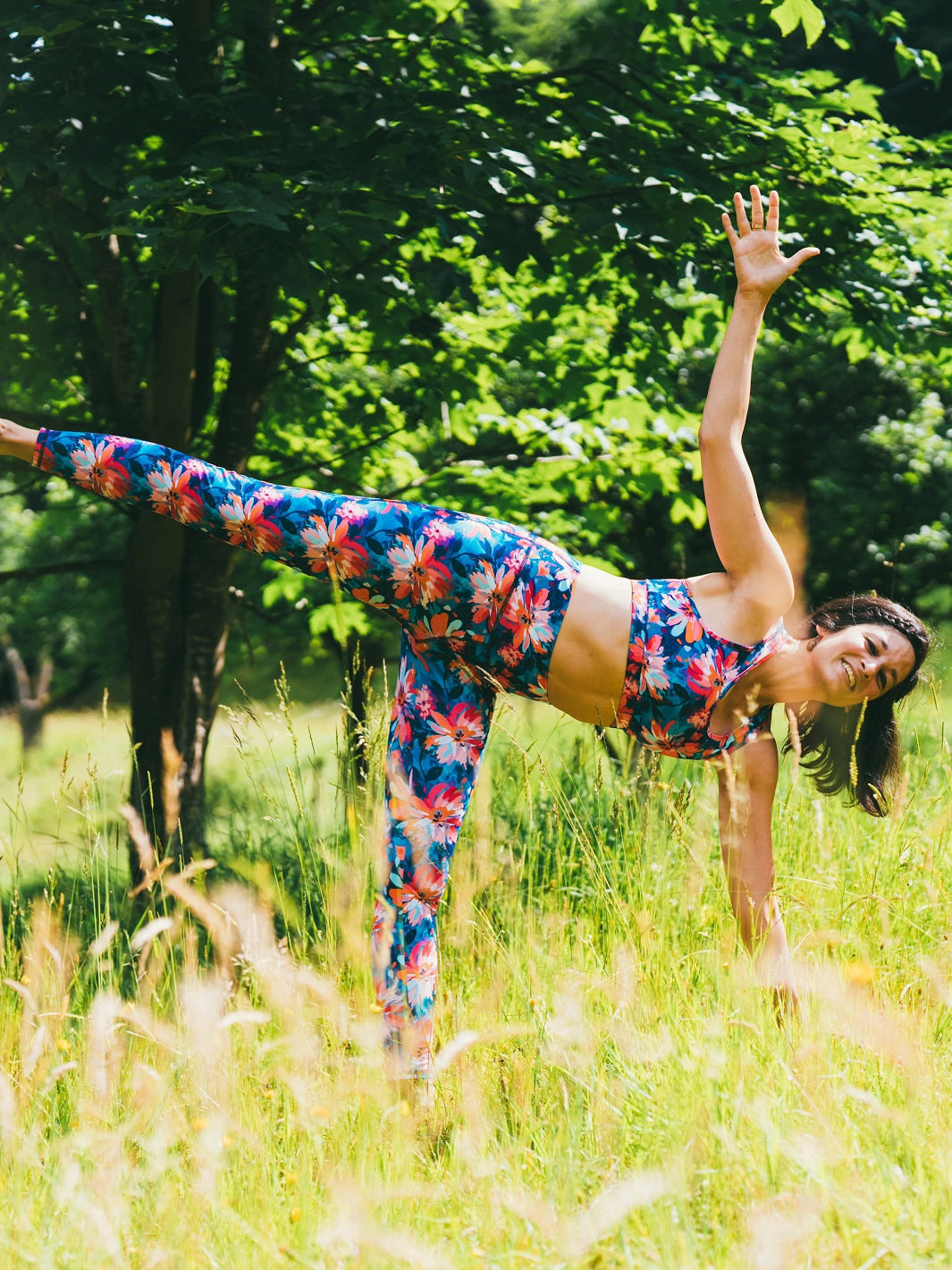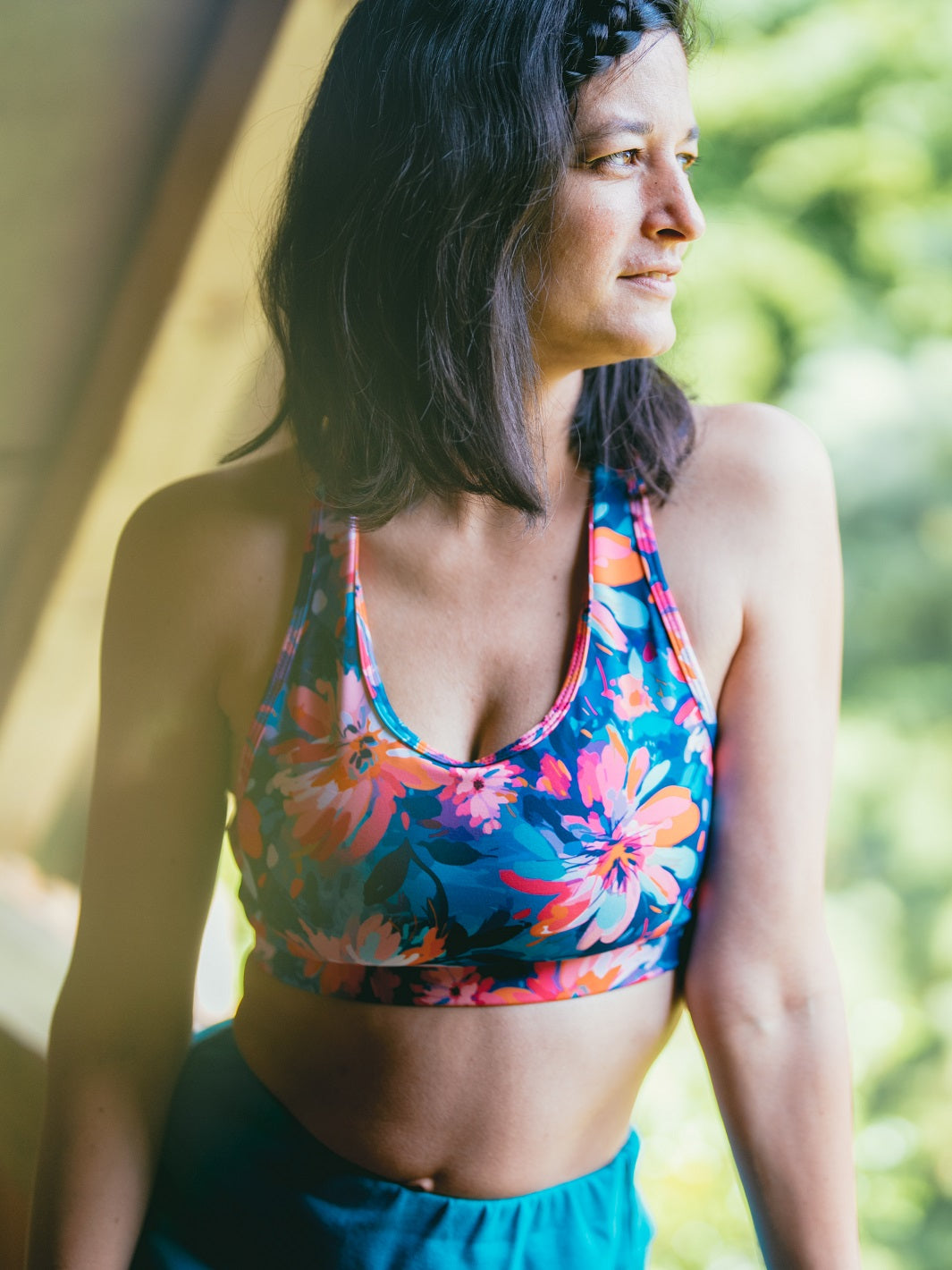Have you heard of Ashtanga Yoga but still don't know its secrets?
You are in the right place.
But before diving into the subject, a little warning: you may be very surprised by your very first session of Ashtanga Yoga, a type of Yoga like no other.
And for good reason: you will not have the right to practice, but only to observe!
It is only from the second session that you will be able to roll out your mat and sit down next to the other practitioners.
The teacher will introduce you to the warm-ups at the start of the session, including Sun salutations and will guide you to begin the first postures.
Don't be surprised: a beginner in Ashtanga Yoga will only do a few postures at first and the session may seem short.
It can be a little frustrating but it's all for your own good: to ensure solid and lasting progress.
The word Ashtanga comes from the Sanskrit “ashtau” which means 8 and “anga” which means limbs.
The 8 limbs refer to the 8 pillars of the yogic practice of Ashtanga: the rules of behavior, self-discipline, body postures, the art of breathing, mastery of the senses, concentration, meditation and enlightenment.
Inspired by Hatha Yoga, Ashtanga yoga has the particularity of offering sequences of very specific postures, always performed in the same order and called series.
There are 6 different series: a primary, an intermediate and 4 advanced.
Per series, there are approximately 80 postures increasing in intensity and as long as one of them is not mastered, the yogi cannot move on to the next posture.
So even if you are a confirmed Yogini, you will have to start with the first series.
But as you certainly know, you never get bored in Yoga and “if the postures don't change, you change”.
Activate your curiosity and observe your progress!
The first series of Ashtanga Yoga are sufficiently complete and challenging for you to find what you are looking for.
Yes, you will enjoy yourself!!

Progress of the Ashtanga Yoga session
An Ashtanga series traditionally begins with sun salutations A and B followed by standing then seated postures and finally back bends.
An Ashtanga session ends with a series of postures which slow down the rhythm, including several inversions such as the candle, before ending in shavasana.
Each student advances at his own pace and the teacher gives the green light for access to the following series, if he considers that the level has been reached and if there is no risk of injury.
Texts and reference person
Ashtanga is the fruit of a long line of yogis. Originally, the renowned yogi Tirumalai Krishnamacharya gave birth to modern yoga as we know it today and it was one of his students, Pattabhi Jois, who founded Ashtanga yoga by opening his own school in Mysore, India.
This is why you will sometimes find the name “Yoga Style Mysore”.
The lineage continues today with his grandson and his students who have become accredited teachers.

Particularity of Ashtanga Yoga
Ashtanga Yoga is, in tradition, a daily but also morning practice.
Sessions take place 6 days a week early in the morning.
For what ? Quite simply to enjoy a mind that is still uncluttered and disturbed by the worries of everyday life.
Practicing the same series of postures day after day, with the “deal” of the day (our moods and our physical condition) provides an excellent way to observe ourselves and get to know ourselves better.
Breathing
As in all yoga, breathing plays an important place in the practice of Ashtanga Yoga. It can be compared to a wave which breaks then recedes, announcing with its noise the beginning of one movement and the beginning of another. Breathing will guide you, will also allow you to keep certain postures and quite simply to stay focused.
The look
What to do with your eyes during Ashtanga Yoga practice?
Your gaze says more than any other part of your body about your inner state: darting eyes denounce a restless mind, a fixed and calm gaze reflects inner calm.
Practicing Ashtanga Yoga also means working on our gaze, called Drichti, to relax us while sharpening our attention.
Benefits of Ashtanga Yoga
Like all other forms of Yoga, Ashtanga Yoga has its own benefits for the body but also for the mind.
In particular, it allows:
- Reduce the level of toxins in the body : during exercise, the body temperature increases and causes sweating, a process which allows the elimination of toxins
- Strengthen the joints: the demands and variety of postures in the Ashtanga series allow in-depth work on the joints
- Increase life force : a dynamic practice undeniably improves your endurance and flexibility, giving you more vitality and energy
- Reduce stress and anxiety : something in common with many other types of yoga is the return to calm through breathing during practice.
Intensity
This form of yoga requires a lot of energy. Along with Bikram yoga, Ashtanga yoga is one of the most physically intense, especially when you approach the last series. We are indeed in a dynamic Yoga with a fluid sequence of postures.
Equipment
A good non-slip mat and breathable clothing.
Ashtanga Yoga: for whom?
For all those who need to exercise while developing calm and concentration. After all, it is recommended to know the sequences like the back of your hand to reap all the benefits.

In summary
Repetition, patience, humility, endurance, breath
Video
Here is a beautiful introduction to Ashtanga yoga with Arianne from YogaCoaching
Discover here our eco-responsible yoga outfits made in France from recycled materials, perfectly suited to practicing all types of yoga!
And so as not to miss any news from Géopélie, subscribe to our newsletter here at the bottom of the page 👇 we only send a maximum of two per month!
Discover the other types of yoga:






Leave a comment